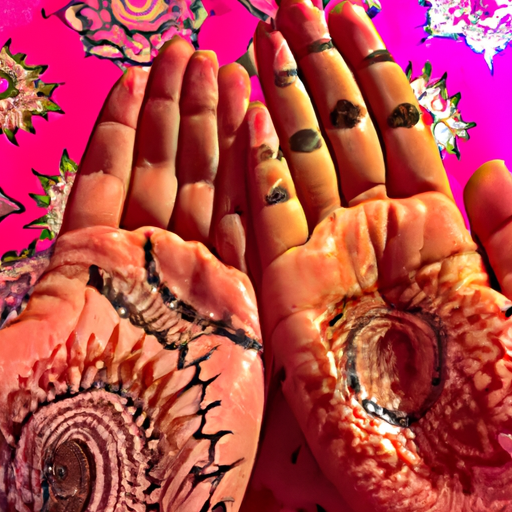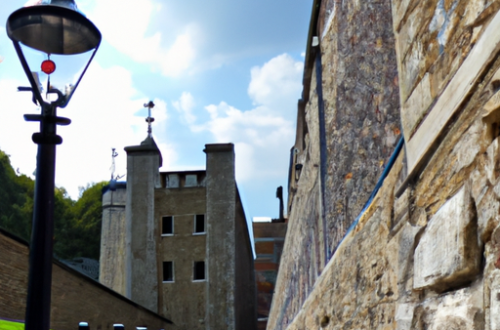
How Do I Handle Cultural Etiquette For Dress Code In Religious Or Sacred Places?
When visiting religious or sacred places, it is important to be mindful of cultural etiquette regarding dress code. Each place may have its own set of rules and guidelines, and it is essential to respect and adhere to them. By doing so, you can demonstrate your understanding and appreciation for the customs and traditions of the particular culture, fostering a sense of mutual respect and understanding between yourself and the community you are visiting.
Understanding the Importance of Cultural Etiquette
When visiting religious or sacred places, it is crucial to understand and respect the cultural etiquette associated with dress code. Dressing appropriately demonstrates your understanding and appreciation for the beliefs and practices of the community you are visiting. By adhering to the specific requirements of each religious or sacred place, you can ensure that you are showing respect and avoiding any unintentional offense.
Researching and Familiarizing Yourself with the Dress Code
Before visiting a religious or sacred place, take the time to thoroughly research and familiarize yourself with the dress code requirements. Each place may have its own specific guidelines, so it is essential to know what is expected of you. You can find the dress code information online or consult local resources like guidebooks, travel agencies, or cultural centers. By understanding the cultural and religious reasons behind the dress code, you can approach your visit with a deeper understanding and appreciation.
Exploring the Specific Requirements of Different Religious or Sacred Places
Different religious or sacred places may have specific dress code requirements that you should be aware of. For example, when visiting a mosque, both men and women are generally expected to cover their arms, legs, and hair. In contrast, when visiting a Buddhist temple, women may be asked to wear skirts that cover their knees, while men might need to remove their hats or cover their shoulders. Understanding these specific requirements ensures that you are showing respect and honoring the traditions of each place.
Understanding the Cultural and Religious Reasons Behind the Dress Code
To truly appreciate the significance of the dress code, it is crucial to understand the cultural and religious reasons behind it. Dress codes often reflect important values and beliefs within a community. For instance, modest clothing is often encouraged to promote humility and modesty in a religious context. By understanding these underlying beliefs, you can approach the dress code with respect and sensitivity.
Researching Online or Consulting Local Resources
To gather accurate and up-to-date information about the dress code, consider researching online or consulting local resources. Many religious or sacred places may have official websites or guidelines that provide information about appropriate attire. Additionally, guidebooks, travel agencies, and cultural centers can provide valuable insights and recommendations. Consulting these resources ensures that you have the most accurate information and can dress accordingly.
Choosing Appropriate Attire
Respecting the customs and traditions of the religious or sacred place is essential when choosing your attire. Opt for modest and conservative clothing that covers your body appropriately. Avoid wearing revealing or offensive outfits that may be seen as disrespectful or inappropriate. Remember that you are a guest in these spaces, and your attire should reflect that.
Respecting the Customs and Traditions of the Religious or Sacred Place
When selecting your attire, it is important to respect the customs and traditions of the religious or sacred place you are visiting. Understand that each community may have different expectations, and being mindful of these shows your willingness to honor their beliefs. By dressing appropriately, you demonstrate your respect for the sacredness of the space and the people who worship there.
Opting for Modest and Conservative Clothing
To ensure you are following the appropriate dress code, opt for modest and conservative clothing. Choose garments that cover your shoulders, chest, and legs appropriately. Avoid clothing that is tight-fitting or transparent, as these may be considered disrespectful or immodest. By adhering to these guidelines, you can demonstrate your understanding of and respect for the religious or sacred space you are visiting.
Avoiding Revealing or Offensive Outfits
To prevent causing offense or disrespect, it is vital to avoid wearing revealing or offensive outfits. This includes short skirts or shorts, low-cut tops, or clothing with offensive slogans or graphics. Remember that these places hold deep meaning and sacredness for the community, and it is essential to dress in a way that shows reverence and respect.
Covering the Body
One common requirement in many religious or sacred places is to cover the arms and legs appropriately. Ensure that your clothing choice includes garments that cover your shoulders and extend below your knees. Avoid wearing short skirts or shorts that do not meet these requirements. By covering your body appropriately, you show respect for the customs and traditions associated with the space you are visiting.
Wearing Appropriate Clothing to Cover the Arms and Legs
To adhere to the dress code, make sure to wear clothing that covers your arms and legs. This may involve wearing long sleeves and full-length pants or skirts. Loose-fitting garments are often preferred, as they promote modesty and comfort. By ensuring your attire covers your limbs, you can show your respect for the religious or sacred space and the people who worship there.
Avoiding Short Skirts or Shorts
When visiting religious or sacred places, it is important to avoid wearing short skirts or shorts. These types of clothing may not meet the dress code requirements and could be seen as disrespectful or inappropriate. Opt for longer skirts or pants that cover your legs adequately. This way, you can ensure that you are dressing in a manner that is appropriate and respectful.
Consideration for Head Coverings or Veils
In some religious or sacred places, it may be necessary to cover your head, especially for women. This requirement is often associated with a sense of modesty and respect. If the dress code specifies the use of head coverings or veils, consider wearing one to demonstrate your understanding and adherence to the customs and traditions of the place. By doing so, you show respect and honor the beliefs of the community.
Understanding When It Is Necessary to Remove Footwear
Many religious or sacred places require visitors to remove their footwear before entering. This custom signifies respect and humility. Pay attention to signs or instructions provided, as they will indicate when it is necessary to remove your shoes. By following this protocol, you can avoid causing offense and demonstrate your understanding of the cultural practices associated with the space.
Learning the Proper Way to Remove and Store Shoes or Socks
When required to remove your shoes or socks, it is important to do so in the proper manner. Some places may provide designated areas where you can store your footwear. Others may require you to carry your shoes or socks with you as you explore. Pay attention to any guidelines provided by the religious or sacred place, and follow them accordingly. By respecting these practices, you show your consideration for the customs and traditions associated with the space.
Carrying Clean Socks or Foot Coverings If Required
In certain religious or sacred places, it may be necessary to wear clean socks or foot coverings instead of going barefoot. This requirement ensures cleanliness and hygiene as you move through these spaces. To adhere to the dress code, consider carrying a pair of clean socks or foot coverings with you. By doing so, you can easily comply with any footwear restrictions and demonstrate your understanding and respect for the cultural practices in place.
Minimizing Jewelry, Piercings, and Accessories
While visiting religious or sacred places, it is advisable to minimize the use of jewelry, piercings, and accessories. This is to ensure that attention is focused on the sacredness of the space rather than personal adornments. By minimizing these items, you show respect and avoid causing any distractions. Remember that the purpose of your visit is to appreciate and understand the cultural and religious significance of the place.
Understanding the Cultural Significance of Certain Accessories
Certain accessories may hold cultural significance in religious or sacred places. Take the time to educate yourself about these cultural symbols and their meanings. Understanding the significance of specific accessories allows you to appreciate and respect their cultural and religious value. By being knowledgeable about these symbols, you can also ensure that you do not inadvertently misuse or disrespect them.
Removing or Adjusting Items if Requested
In some cases, you may be asked to remove or adjust certain items of clothing or accessories while inside a religious or sacred place. This can include removing hats, scarves, or sunglasses. If you are asked to do so, comply with the request cheerfully and promptly. By respecting the instructions provided, you show your willingness to honor the rules and rituals associated with the space you are visiting.
Ensuring Cleanliness of Clothing and Personal Hygiene
Maintaining cleanliness and personal hygiene while visiting religious or sacred places is crucial. Ensure that your clothing is clean and free from stains or strong odors. Take the time to groom yourself and practice good personal hygiene, including brushing your teeth and combing your hair. By presenting yourself in a clean and tidy manner, you show your respect for the space and the people who worship there.
Washing Hands or Feet If Required
Some religious or sacred places may require visitors to wash their hands or feet before entering. This act symbolizes purification and is an essential part of the cultural and religious practices associated with these spaces. If required, find the designated areas for hand or foot washing and follow the proper procedure. By participating in these rituals, you show your understanding and respect for the customs and traditions of the community.
Taking Off Dirty or Muddy Shoes Before Entering Sacred Spaces
To maintain cleanliness and respect, it is important to remove any dirty or muddy shoes before entering sacred spaces. This prevents tracking dirt or debris inside, which could be seen as disrespectful. Check for any designated areas where you can store dirty shoes or carry a plastic bag to hold them. By taking the extra step to remove dirty footwear, you show your consideration for the sacredness of the space and the importance of cleanliness.
Understanding the Significance of Religious Symbols or Icons
Many religious or sacred places have symbols or icons that hold deep religious and cultural significance. It is crucial to understand the meaning behind these symbols and icons before visiting. This knowledge allows you to demonstrate respect and reverence in your interactions with them. By appreciating the significance of these symbols, you can ensure that you are not inadvertently disrespectful or offensive.
Avoiding Touching or Displaying Disrespect to Religious Symbols
To show respect for religious symbols or icons, it is important to avoid touching or displaying any form of disrespect towards them. Understand that these symbols hold deep religious and cultural meaning for the community. It is best to observe any guidelines or signs provided and adhere to them. By refraining from touching or displaying disrespect to these symbols, you demonstrate your understanding and respect for the beliefs of the community.
Learning Proper Behavior or Gestures in Relation to Religious Symbols
To navigate religious or sacred places respectfully, take the time to learn proper behavior or gestures in relation to religious symbols. This may include appropriate forms of greeting, gestures of respect, or ways of showing reverence. By understanding and practicing these customs, you can ensure that your visit is conducted in a manner that is respectful and understanding of the cultural and religious practices in place.
Listening to Instructions Provided by Authorities or Guides
When visiting religious or sacred places, it is important to listen to any instructions provided by authorities or guides. They are there to ensure that visitors understand and follow the protocols and rules of the space. By attentively following their instructions, you show your willingness to cooperate and respect the cultural practices and traditions associated with the religious or sacred place.
Understanding the Rules and Regulations of the Place
Each religious or sacred place may have its own specific rules and regulations that visitors must adhere to. It is essential to familiarize yourself with these rules before your visit. This may include guidelines on photography, restricted areas, or prohibitions on certain behaviors. By understanding and respecting these rules, you can ensure that your visit is conducted in a manner that is considerate and respectful of the space and its traditions.
Obeying Any Specific Protocols or Rituals
Religious or sacred places often have specific protocols or rituals that visitors are expected to follow. These may include procedures for entering, sitting, or participating in certain practices. It is important to observe and obey these protocols to show respect and honor the traditions of the space. By participating in these rituals, you demonstrate your understanding and appreciation for the cultural and religious significance of the place.
Respecting the Rules and Regulations Regarding Photography
Many religious or sacred places have rules and regulations regarding photography. Some places may prohibit photography altogether, while others may allow it under certain conditions. It is important to respect these rules and regulations to ensure that the sanctity of the space is preserved. Always check for signage or ask for permission before taking any photographs. By respecting these guidelines, you show your understanding and respect for the cultural sensitivities surrounding photography.
Avoiding Taking Photos of Individuals Without Their Permission
When taking photographs in religious or sacred places, it is essential to respect the privacy and personal space of individuals. Avoid taking photos of individuals without their explicit permission. Some people may not feel comfortable being photographed due to religious or cultural reasons. By obtaining consent before taking photos, you show your respect for the boundaries and wishes of others.
Understanding the Cultural Sensitivities Around Photography
In many cultures, the act of photography is viewed with specific cultural sensitivities. Recognize that photography can be seen as intrusive or disrespectful in certain religious or sacred places. Educate yourself about the cultural sensitivities surrounding photography and adjust your behavior accordingly. By being mindful of these sensitivities, you can ensure that your actions align with the cultural practices and avoid causing any offense.
In summary, understanding and adhering to the cultural etiquette associated with dress code in religious or sacred places is of paramount importance. By researching and familiarizing yourself with the specific requirements of each place, choosing appropriate attire, respecting customs and traditions, and following any instructions or protocols, you can ensure that your visit is conducted in a manner that shows respect, appreciation, and sensitivity towards the religious and cultural practices of the community. By embracing cultural etiquette, you can foster a deeper understanding and connection with the places you visit and honor the sanctity they hold.




